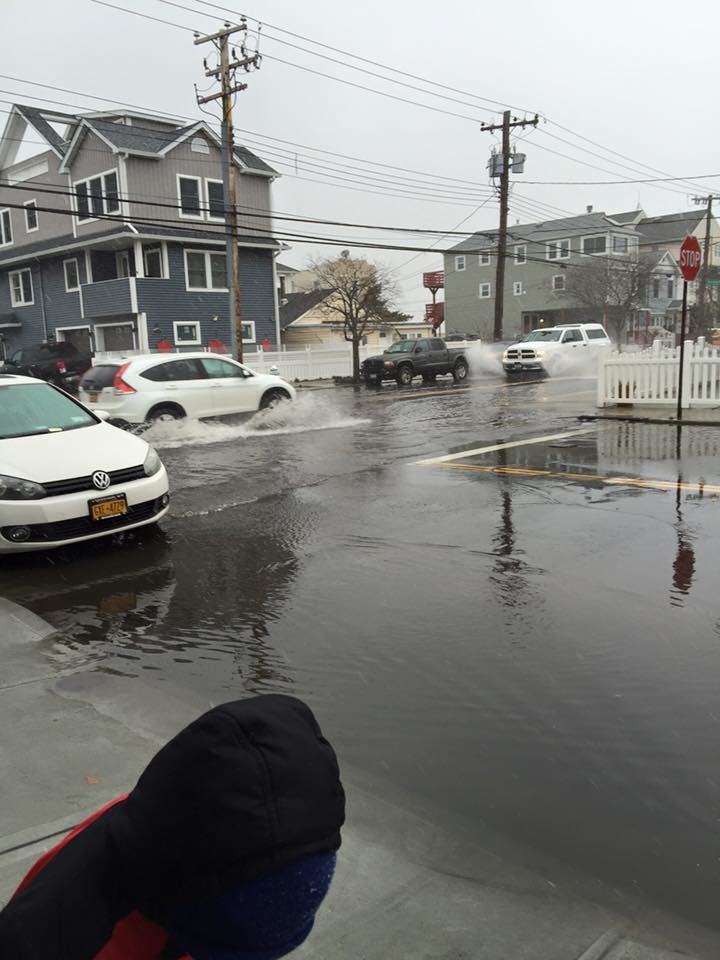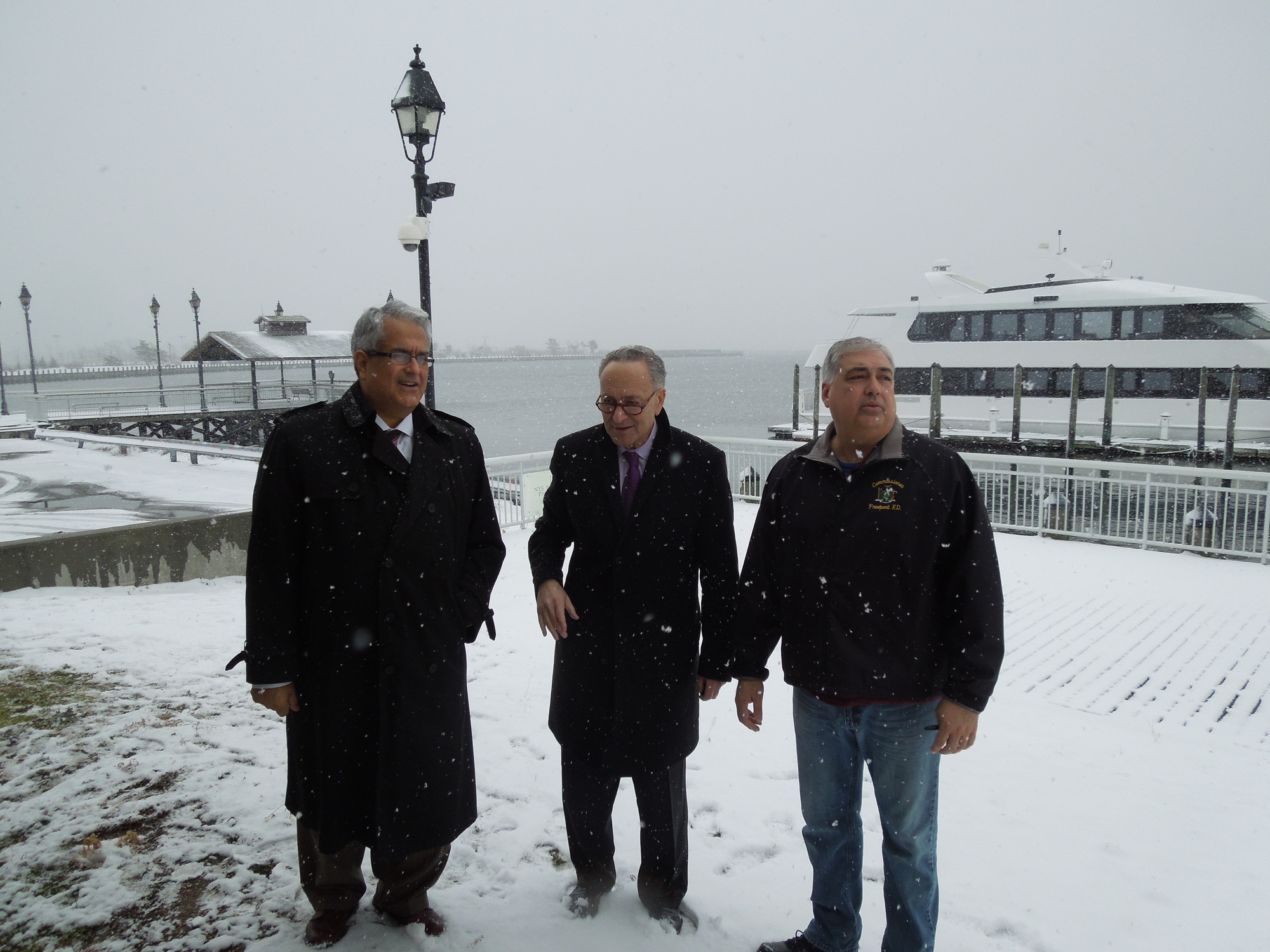More flooding along the South Shore
Schumer urges funding for Nassau Back Bays study
When it rains or snows, it floods. At least that’s what happens if you live in one of Nassau County’s bay back communities, like Freeport, that endure flooding not just during events like Hurricane Sandy, but in most heavy rain or snowstorms with high tide cycles. These communities stretch from Long Beach and the Five Towns north to Island Park and Oceanside, and east along the South Shore from Baldwin to Massapequa.
At a press conference in Freeport on Monday, U.S. Sen. Charles Schumer, Hempstead Town Supervisor Anthony Santino and Freeport Deputy Mayor Jorge Martinez urged the U.S. Army Corps of Engineers to release federal funds to begin the Nassau Back Bays project, a study that would recommend ways in which to alleviate flooding and best shield South Shore communities from another Sandy.
Approximately $7 million in federal funding for “flood and storm damage reduction” is available in the Army Corps’ investigation account, Schumer explained. “I believe the Nassau County Back Bays study should be first on their list,” he said. “The money is there. I have met with the Army Corps and told them this is a priority. We don’t want to wait.” The study, which should take six months to a year to complete, would cost around $500,000, Schumer said.
The study would examine coastal flooding that occurred during Sandy and analyze a variety of flood protection measures, from raising additional homes to installing tidal surge gates at the Jones and Rockaway inlets. “The study will look at many things — seawalls, dunes, berms, anything and everything,” Schumer explained. “It will be very comprehensive.”
The Army Corps’ North Atlantic Coast Comprehensive Study, released last January, identified Nassau County’s back bays as one of nine high-risk areas along the Northeast coast that warranted additional analysis in order to develop a comprehensive flood risk reduction plan. The two-year study, funded by the 2013 Sandy Relief Bill, addressed coastal storm and flood risk.
Three of the high-risk areas — New York/New Jersey Harbor, New Jersey Back Bays and Norfolk, Va. — were allocated money for further study in 2016, but there was “no funding available for Nassau,” Schumer said. Then in December, “$7 million was added [to the budget] to fund additional studies,” he said. “I will make it clear to the president that Nassau should be on that list.”
The Army Corps of Engineers will decide this month which two additional communities will have feasibility studies in 2016. “Nassau, at number four, is at the top of the list,” Schumer said.
Hempstead Town Supervisor Anthony Santino supported Schumer’s efforts to fund the study. “We need funding for a Back Bays study,” Santino said. “Storm surges and coastal flooding are pervasive issues that do more than just threaten the quality of life for residents who live along the coast of our barrier island and the mainland communities that front our local bays. In fact, coastal flooding threatens the viability and the very survival of entire neighborhoods. That’s why it is so important for governments to study options to protect coastal infrastructure, and we need to secure monies to do the research that will precede projects to make our families safer.”
Freeport sustained major flooding damage during Sandy, Martinez explained. “There were 3,500 homes flooded, $8 million in losses,” he said. “This is a South Shore issue, and needs to be addressed. All of us will benefit.”
On Monday, the rain and snow reminded those who live in back bay communities that flooding remain a persistent problem. In Freeport the tide, 3.6 feet above the normal high, flooded streets for hours. Rob Fisenne, the village’s superintendent of public works, said that residents should be prepared for more unusually high tides.
“I’ve lived here most of my life, but the tides seem to be getting higher,” said resident Juliet Anders. “I move my car when it looks like it could flood

 44.0°,
Mostly Cloudy
44.0°,
Mostly Cloudy 







